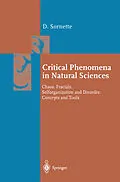Concepts, methods and techniques of statistical physics in the study of correlated, as well as uncorrelated, phenomena are being applied ever increasingly in the natural sciences, biology and economics in an attempt to understand and model the large variability and risks of phenomena. This is the first textbook written by a well-known expert that provides a modern up-to-date introduction for workers outside statistical physics. The emphasis of the book is on a clear understanding of concepts and methods, while it also provides the tools that can be of immediate use in applications. Although this book evolved out of a course for graduate students, it will be of great interest to researchers and engineers, as well as to post-docs in geophysics and meteorology.
Klappentext
A modern up-to-date introduction for readers outside statistical physics. It puts emphasis on a clear understanding of concepts and methods and provides the tools that can be of immediate use in applications.
Inhalt
1. Useful Notions of Probability Theory.- 2. Sums of Random Variables, Random Walks and the Central Limit Theorem.- 3. Large Deviations.- 4. Power Law Distributions.- 5. Fractals and Multifractals.- 6. Rank-Ordering Statistics and Heavy Tails.- 7. Statistical Mechanics: Probabilistic Point of View and the Concept of "Temperature".- 8. Long-Range Correlations.- 9. Phase Transitions: Critical Phenomena and First-Order Transitions.- 10. Transitions, Bifurcations and Precursors.- 11. The Renormalization Group.- 12. The Percolation Model.- 13. Rupture Models.- 14. Mechanisms for Power Laws.- 15. Self-Organized Criticality.- 16. Introduction to the Physics of Random Systems.- 17. Randomness and Long-Range Laplacian Interactions.- References.
